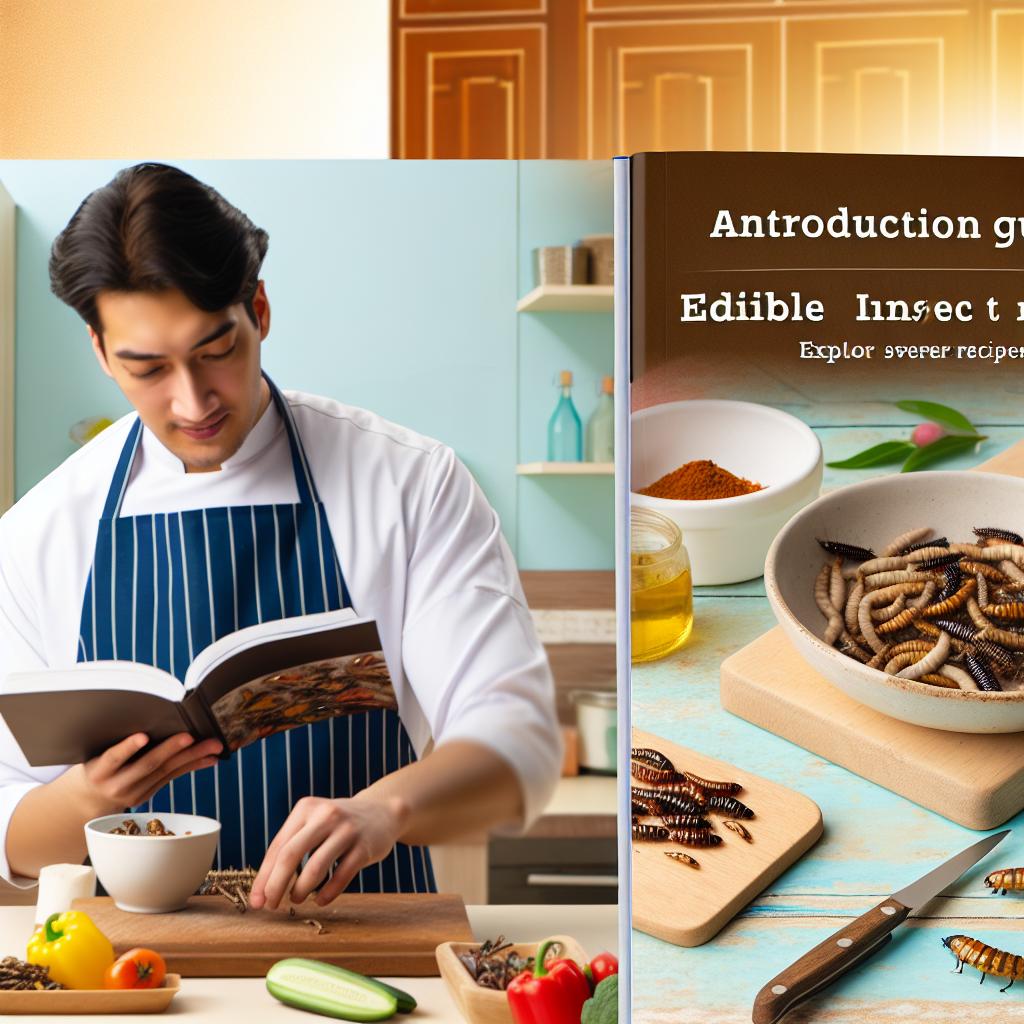Introduction to Edible Insects
The concept of consuming insects, known as entomophagy, is rapidly gaining traction on the global food stage. While it might be a novel idea in some parts of the world, many cultures have long included insects in their diet due to the numerous advantages they offer. This expanding interest is not without reason; insects present a diverse array of nutritional benefits and are significantly more sustainable compared to traditional sources of protein. With rising concerns regarding environmental sustainability and food security, edible insects present a viable, eco-friendly alternative that can effectively supplement or replace conventional dietary proteins like beef, poultry, and pork.
Why Consider Eating Insects?
Edible insects offer a rich nutritional profile that has been appreciated by countless cultures around the globe for centuries. From Africa to Asia, and Latin America, consuming insects is a norm rather than an anomaly. The benefits of including insects in your diet are manifold. They offer a protein content comparable to that of meat and fish, and they are rich in critical micronutrients such as iron, magnesium, selenium, and zinc. Additionally, they provide essential fatty acids, notably omega-3 and omega-6 fatty acids, which are vital for maintaining heart health.
In comparison to traditional livestock farming, which requires substantial water and land resources, insect farming is remarkably efficient. Insect farming emits considerably less greenhouse gases and uses a fraction of the feed and water necessary for traditional livestock. Furthermore, insects have a high feed conversion efficiency; they can convert feed into body mass more efficiently than larger livestock. This reduced ecological footprint makes them a sustainable option, aligning with global efforts to reduce our environmental impact while meeting nutritional demands.
Types of Edible Insects
For those newly venturing into the world of entomophagy, several types of insects are more widely available and can seamlessly integrate into everyday meals. Here are some popular choices:
Crickets: Crickets have a mild, nutty flavor and are incredibly versatile. They can be consumed whole, cooked, or as a powder form known as cricket flour. This flour can substitute for a portion of wheat flour in baked goods, adding an extra layer of nutritional value. Crickets are also rich in B-vitamins, iron, and zinc.
Mealworms: Known for their subtle taste, mealworms are another versatile choice. They can be roasted, fried, added to soups, or ground into mealworm flour for baking. Their mild flavor allows them to assimilate well into a variety of dishes without overpowering other ingredients.
Grasshoppers: Particularly popular in Mexican cuisine, grasshoppers offer a unique, crunchy texture. When roasted or fried, they can serve as the protein component in numerous recipes, pairing well with spices and condiments from around the world.
Ants: With their tangy flavor, ants have been used as a culinary ingredient in many parts of the world. They pair well with chocolate and are used in sauces and as garnishes in gourmet dishes.
Where to Buy Edible Insects
As the popularity of entomophagy grows, so does the availability of edible insects both in physical and virtual marketplaces. Specialty food stores, online platforms, and local farmers’ markets are becoming more adept at providing insects suitable for consumption. However, ensuring insects come from reputable sources is crucial. Suppliers should adhere to stringent hygiene and safety regulations in farming practices. It is also advisable to inquire about the rearing conditions and food safety certifications, ensuring that the products are safe for consumption.
Getting Started with Insect Recipes
Incorporating insects into familiar recipes can bridge the gap between skepticism and acceptance, easing the transition towards including them in regular meals. Below are some foundational recipe ideas to get you started:
Cricket Flour Pancakes
Cricket flour presents an approachable introduction to insect consumption. By simply replacing a portion of wheat flour in your pancake batter with cricket flour, you can enrich your meal with additional proteins and nutrients without altering the flavor profile significantly.
Roasted Mealworms
Crisp and nutritious, roasted mealworms make for an excellent snack. Simply toss mealworms in a little olive oil, season them with salt and pepper, and roast them to perfection. For added flavor and texture, throw them over salads or mix them into grain bowls.
Grasshopper Tacos
For a gourmet twist on a classic dish, seasoned grasshoppers make an excellent taco filling. Sauté them with spices and pair them with fresh vegetables, adding a tangy salsa to balance the flavors. These tacos are nutritionally dense and offer a novel culinary experience.
Safety Considerations
Before indulging in edible insects, certain precautions should be considered to ensure safety. Always ensure that insects are thoroughly cooked to eliminate the risk of pathogens. Additionally, individuals with shellfish allergies should exercise caution, as certain insect proteins may trigger similar reactions. Consultation with an allergist can provide personalized advice on integrating insects into your diet.
Conclusion
The inclusion of edible insects in everyday diets provides a promising path towards sustainability and nutrition without sacrificing flavor or variety. By starting with trusted recipes and gradually diversifying the types and methods of preparation, one can seamlessly integrate these nutrient-rich foods into daily life. For those keen on exploring further, a myriad of resources and culinary guides exist to help navigate the fascinating world of edible insect cuisine. The journey into entomophagy, a practice with rich historical roots and modern significance, offers a unique opportunity to contribute to environmental conservation while meeting personal health objectives.

